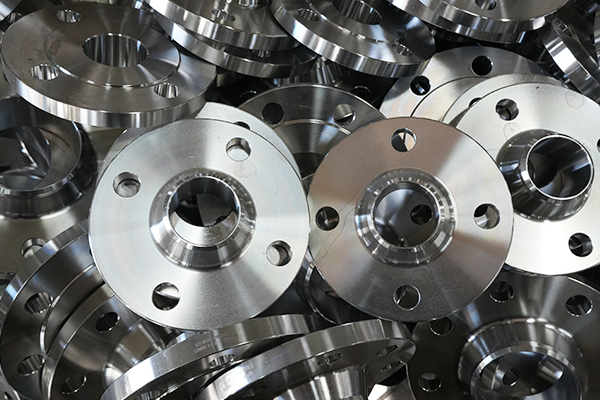NewsDetails
Seamless Steel Pipes in Construction Engineering: Selection and Construction Key Points for Structural Support and Scaffold Erection
author:Zhantong time:2025-06-13 16:11:48 Click:179
In the field of construction engineering, the reliability of materials directly determines the safety and quality of projects. Seamless steel pipes, with their high strength and high stability, occupy a central position in structural support and scaffold erection. Whether it is the load-bearing structure of high-rise buildings or the construction platforms for high-altitude operations, the reasonable selection and standardized construction of seamless steel pipes are crucial for ensuring the smooth progress of engineering projects.
I. Application Characteristics of Seamless Steel Pipes in Construction Engineering
(A) Structural Support Scenarios
In large-scale building load-bearing structures and bridge support systems, the high strength and uniform material properties of seamless steel pipes provide a guarantee for stability. Facing complex stress environments, their continuous, seamless structure avoids stress concentration issues. Compared with other pipe materials, they can better distribute loads, ensuring the long-term stability of the support system.
(B) Scaffold Erection Scenarios
As temporary facilities for construction, scaffolds have extremely high requirements for the anti-deformation ability and connection adaptability of materials. Seamless steel pipes, with their good mechanical properties, can withstand dynamic loads during high-altitude operations. Their standard specifications and diverse connection methods make them flexible and easy to use in scenarios such as building facade construction and interior decoration, meeting the erection needs of different projects.
II. Selection Criteria and Key Points for Seamless Steel Pipes
(A) Selection of Specification Parameters
Pipe diameter, wall thickness, and length are the core parameters for selecting seamless steel pipes. Load-bearing requirements directly influence the choice of pipe diameter and wall thickness. The greater the load, the higher the specifications required for the pipe material. In addition, scaffolds and support structures corresponding to different building heights and spans need to be matched with seamless steel pipes of appropriate specifications to ensure structural safety and economy.
(B) Material Performance Requirements
Steel grades such as Q235 and Q345 are commonly used materials in construction engineering. Q235 has moderate strength and is suitable for general structures. Q345 has higher strength and is often used in high-load scenarios. When selecting materials, it is necessary to consider the engineering environment (such as humidity and temperature) and load characteristics to ensure that the tensile strength, yield strength, and other indicators of the steel pipes meet the design requirements.
(C) Quality Inspection Methods
Quality control starts with visual inspections to ensure that the steel pipe surface is free from defects such as cracks and dents. By accurately measuring dimensions such as pipe diameter and wall thickness and conducting mechanical property tests (such as tensile tests and bending tests), the performance of the pipe material can be verified. At the same time, it is necessary to check the product qualification certificates and quality inspection reports to ensure that the materials comply with national standards.
III. Key Points and Specifications for Seamless Steel Pipe Construction
(A) Construction Specifications for Structural Support
The foundation treatment for structural support construction is crucial. It is necessary to ensure that the foundation is stable to avoid settlement affecting the support effect. Connection methods (such as welding and flange connections) must strictly follow process standards to ensure the strength and sealing of the interfaces. During construction, it is necessary to accurately control the verticality and levelness to ensure uniform load distribution and prevent excessive local stress.
(B) Key Points for Scaffold Erection Construction
Scaffold erection must strictly adhere to spacing standards. The spacing between upright tubes and the step distance between crossbars must meet design requirements to ensure overall stability. The reasonable arrangement of diagonal braces and wall ties can effectively enhance the wind resistance and anti-overturning ability of the scaffold. Coupler connections must be tightened in place, and scaffold boards should be laid flat and firmly to eliminate the risk of high-altitude falls.
(C) Construction Safety Management
Construction personnel must wear protective equipment such as safety helmets and safety belts and strictly comply with safety regulations for high-altitude operations. In the face of severe weather conditions such as strong winds and heavy rain, temporary reinforcement of scaffolds and support structures is necessary. If necessary, construction should be suspended to ensure the safety of personnel and structures.
IV. Common Problems and Solutions
(A) Improper Selection Problems
Using pipes with too small a diameter or substandard materials can easily lead to structural deformation or even collapse. If such problems occur, it is necessary to re-evaluate the load requirements, replace the steel pipes with those that meet the standards, and reinforce the existing structure to eliminate safety hazards.
(B) Non-standard Construction Problems
Problems such as inclined scaffold erection and loose connections can be solved by adjusting the positions of upright tubes and retightening couplers. During construction, it is necessary to strengthen process inspections and strictly follow specifications to avoid safety accidents caused by operational errors.
(C) Maintenance and Care Problems
In outdoor environments, steel pipes are prone to rusting, which affects their service life. Regularly cleaning the surface dirt, applying anti-rust paint, and inspecting and replacing damaged parts in a timely manner can effectively extend the service life of steel pipes and ensure the safety of the project in the later stages.
V. New Technologies and Trend Prospects
With the development of construction technology, new types of seamless steel pipe materials such as high-performance alloy steels are gradually being applied. Their higher strength and corrosion resistance provide more choices for engineering projects. At the same time, the introduction of BIM technology and intelligent monitoring systems can achieve precise simulation and real-time monitoring of the construction process, further enhancing the safety and efficiency of seamless steel pipe construction.
VI. Conclusion and Appeal
In construction engineering, the selection and construction of seamless steel pipes are directly related to the safety and quality of projects. From precise selection to standardized construction and later maintenance, every link should not be overlooked. Only by strictly controlling material quality and construction details can the performance advantages of seamless steel pipes be fully utilized, laying a solid safety foundation for construction engineering.
 Recommended Products
Recommended Products
 Contact us
Contact us
—— Contact:Manager
—— Tel:+86 15231788966
—— Email:info@zhantongpipe.com
—— Url:https://www.zhantongpipe.com
—— Address:Mengcun Hui Autonomous County, Cangzhou City, Hebei Province









